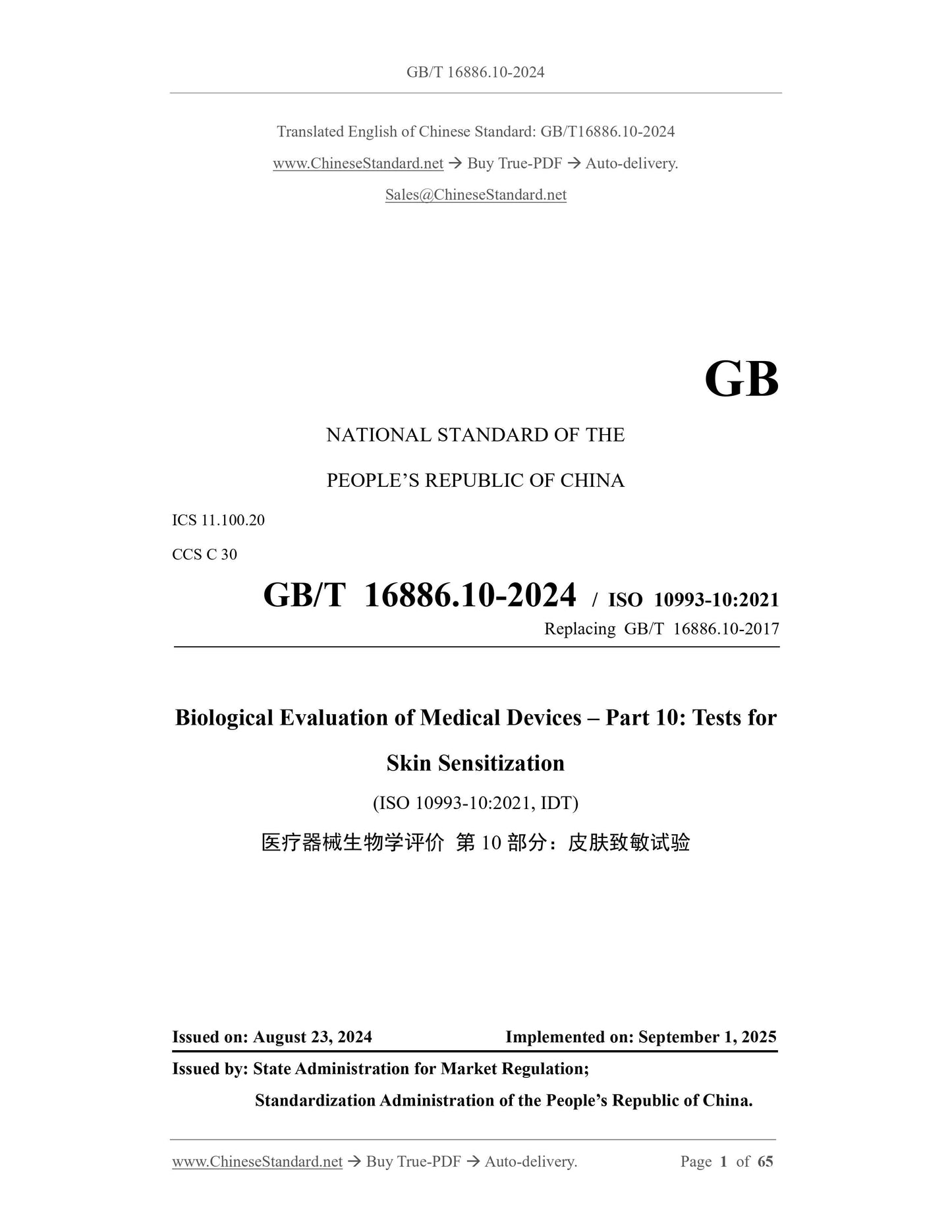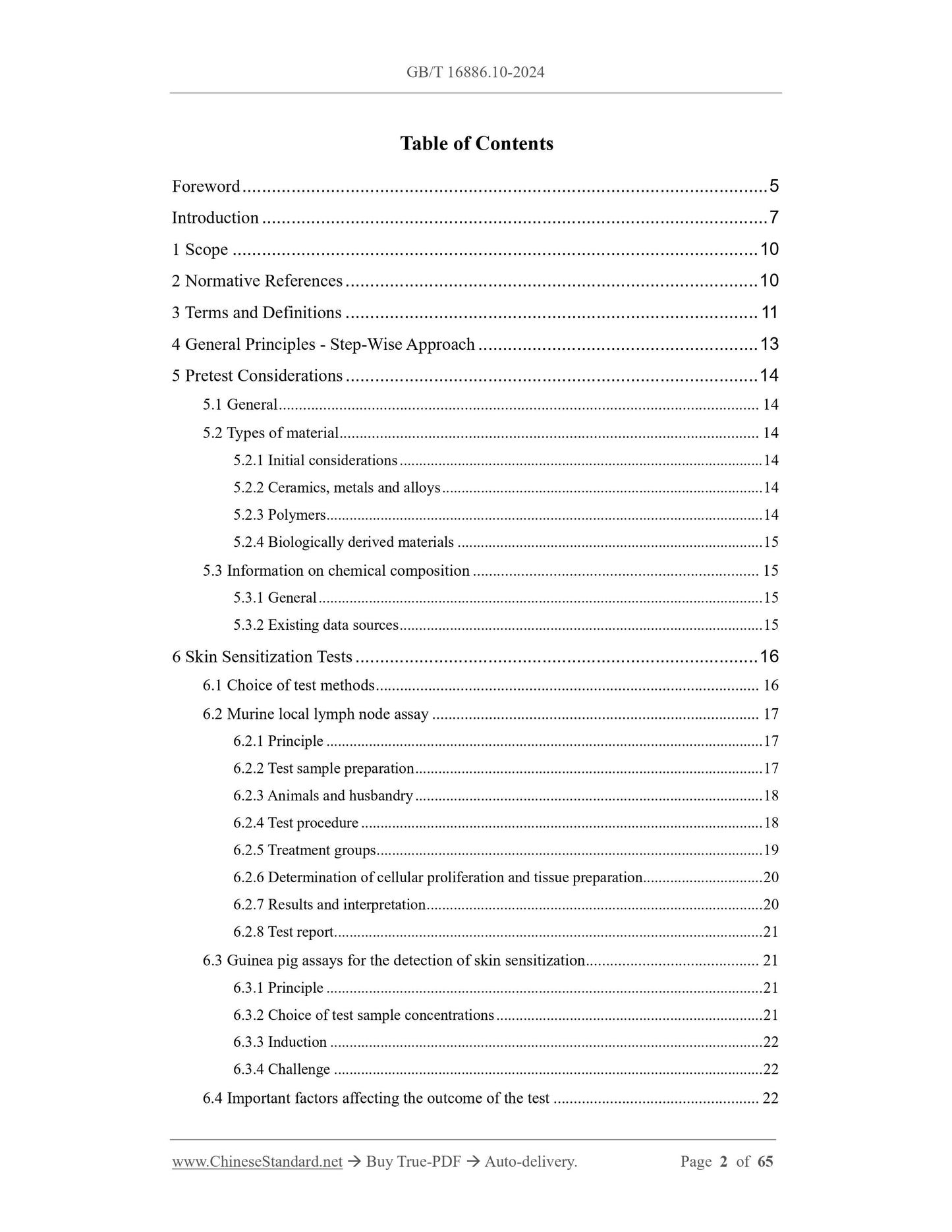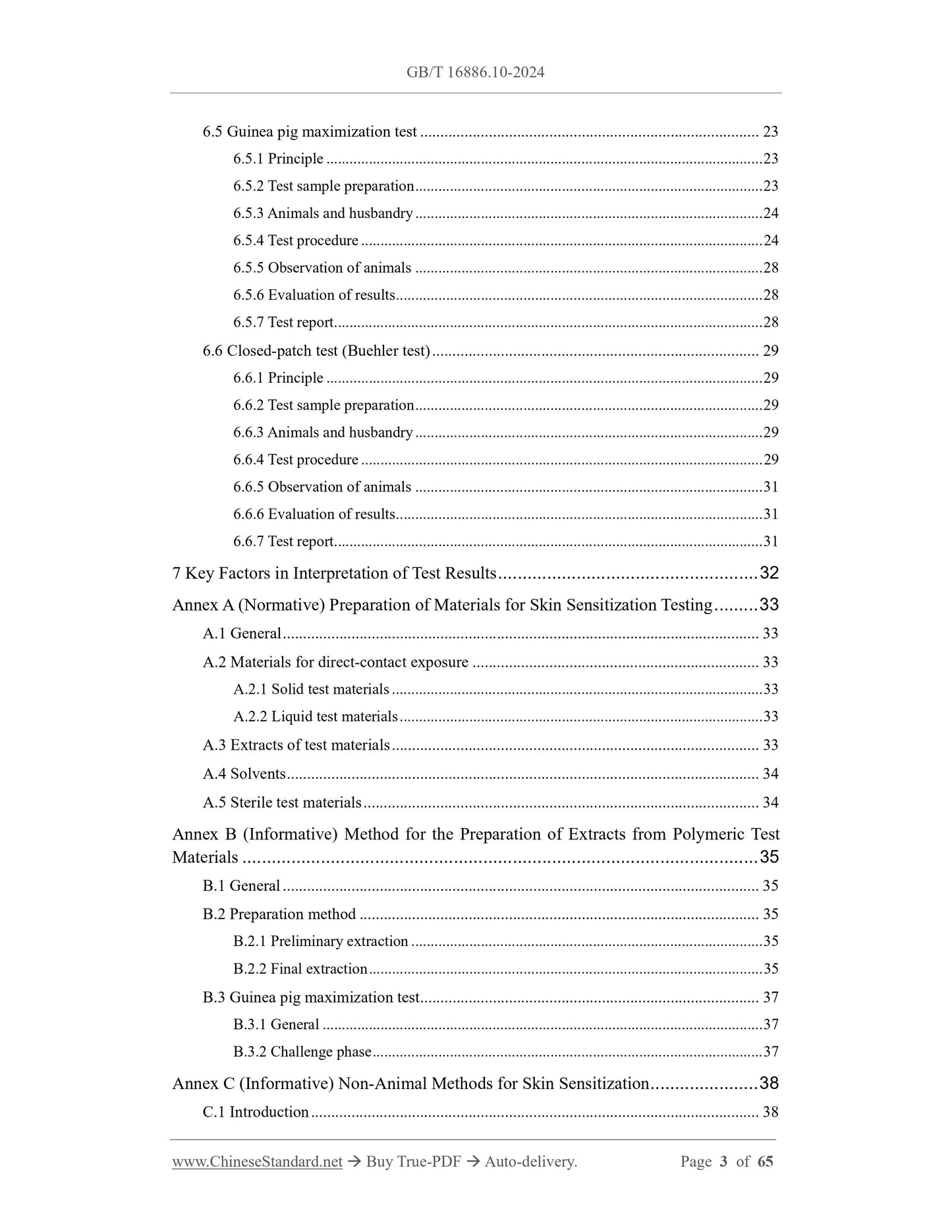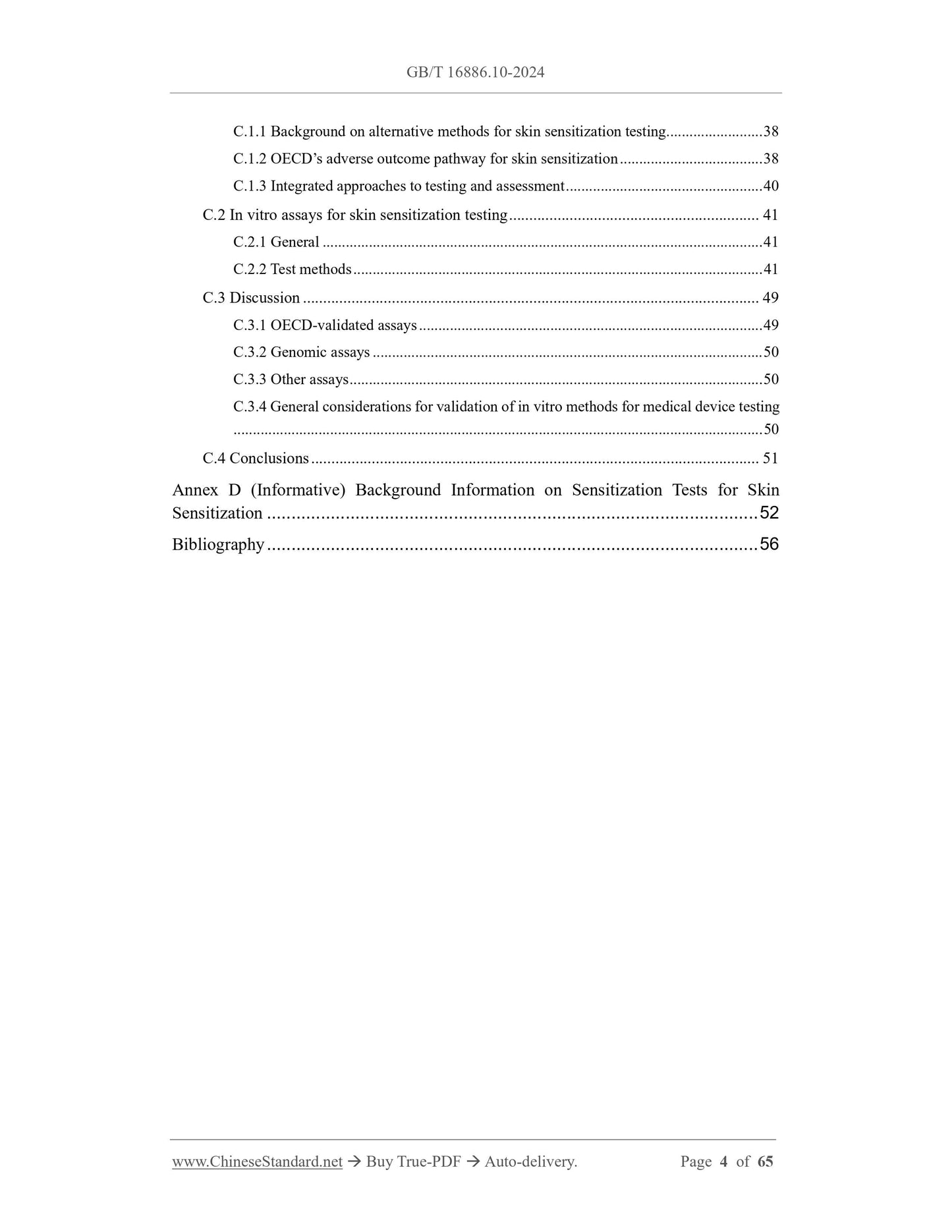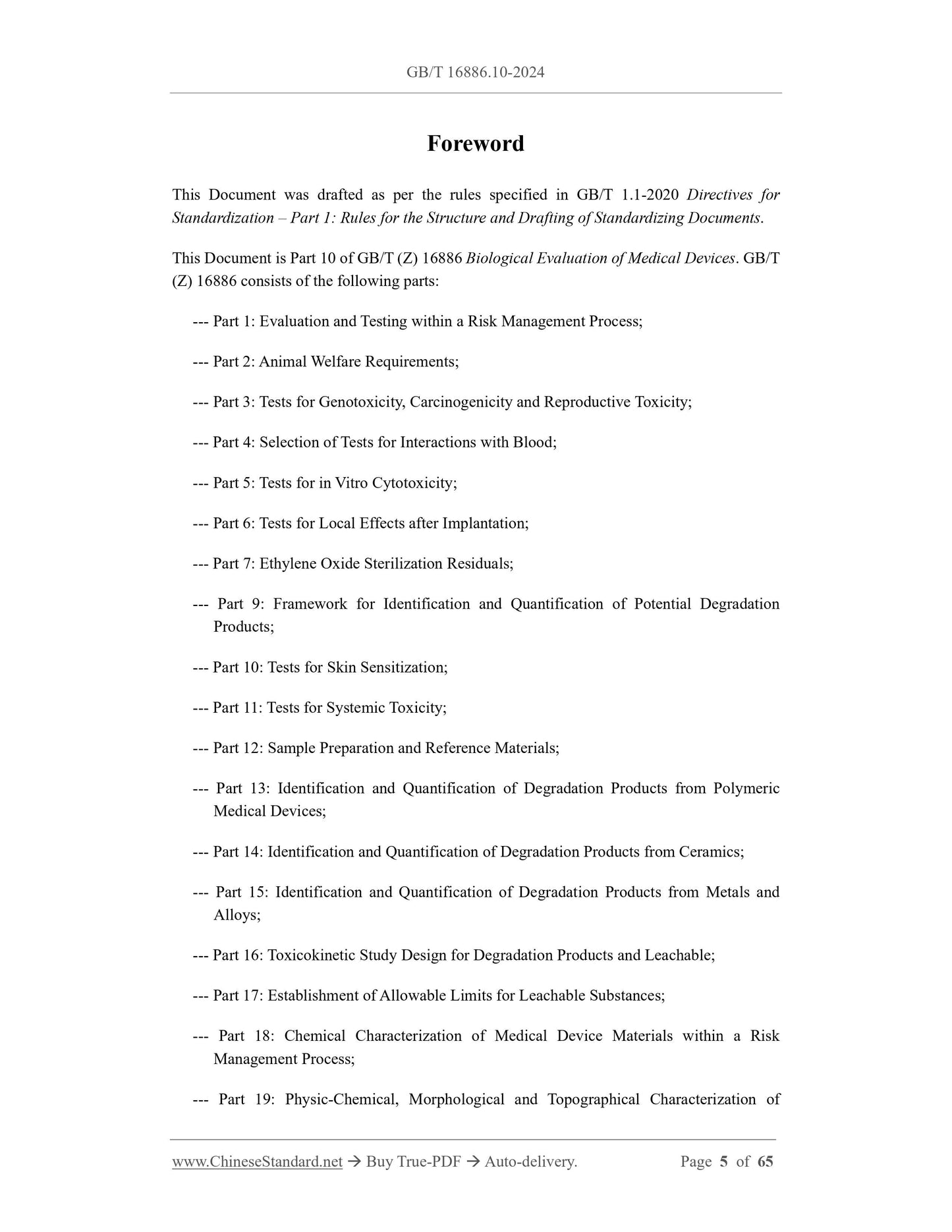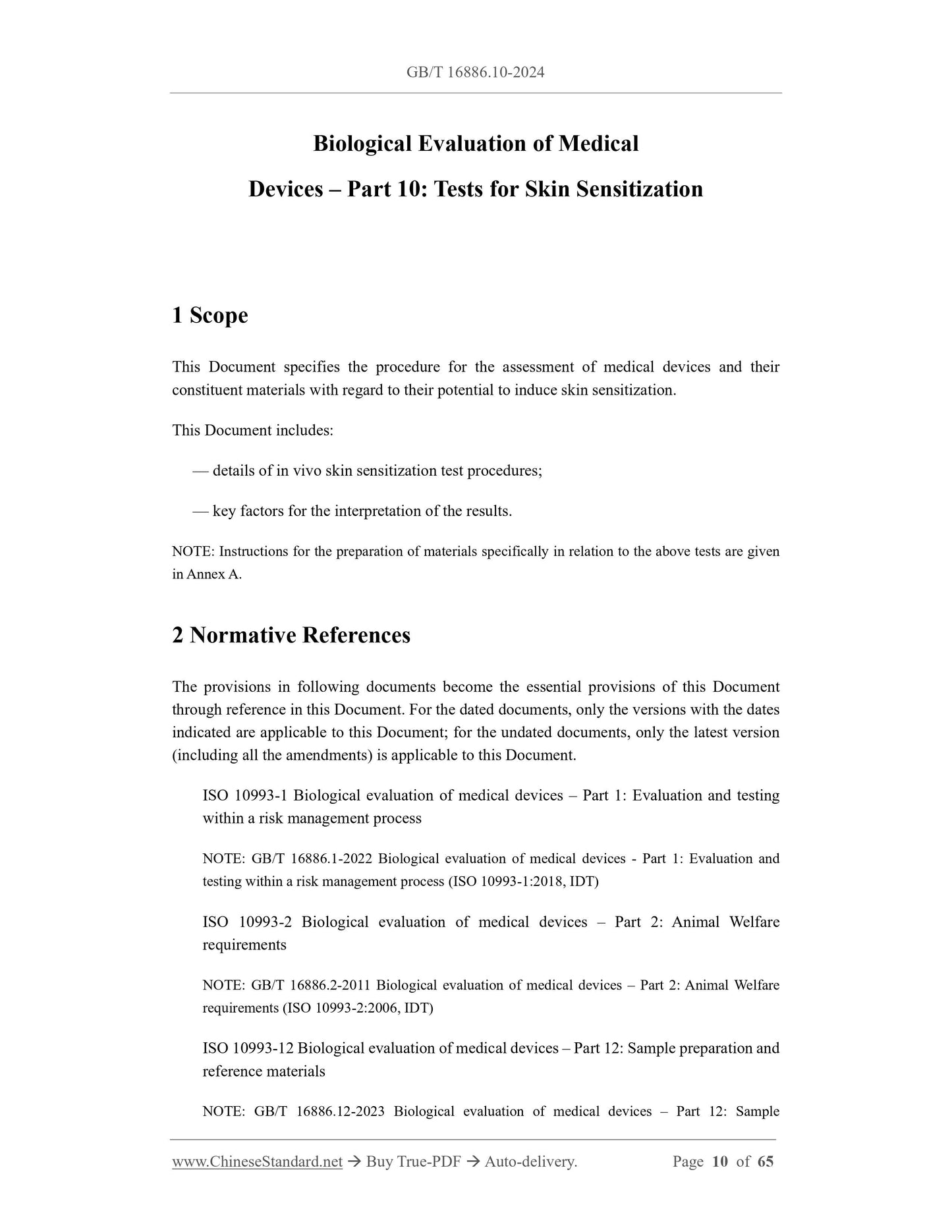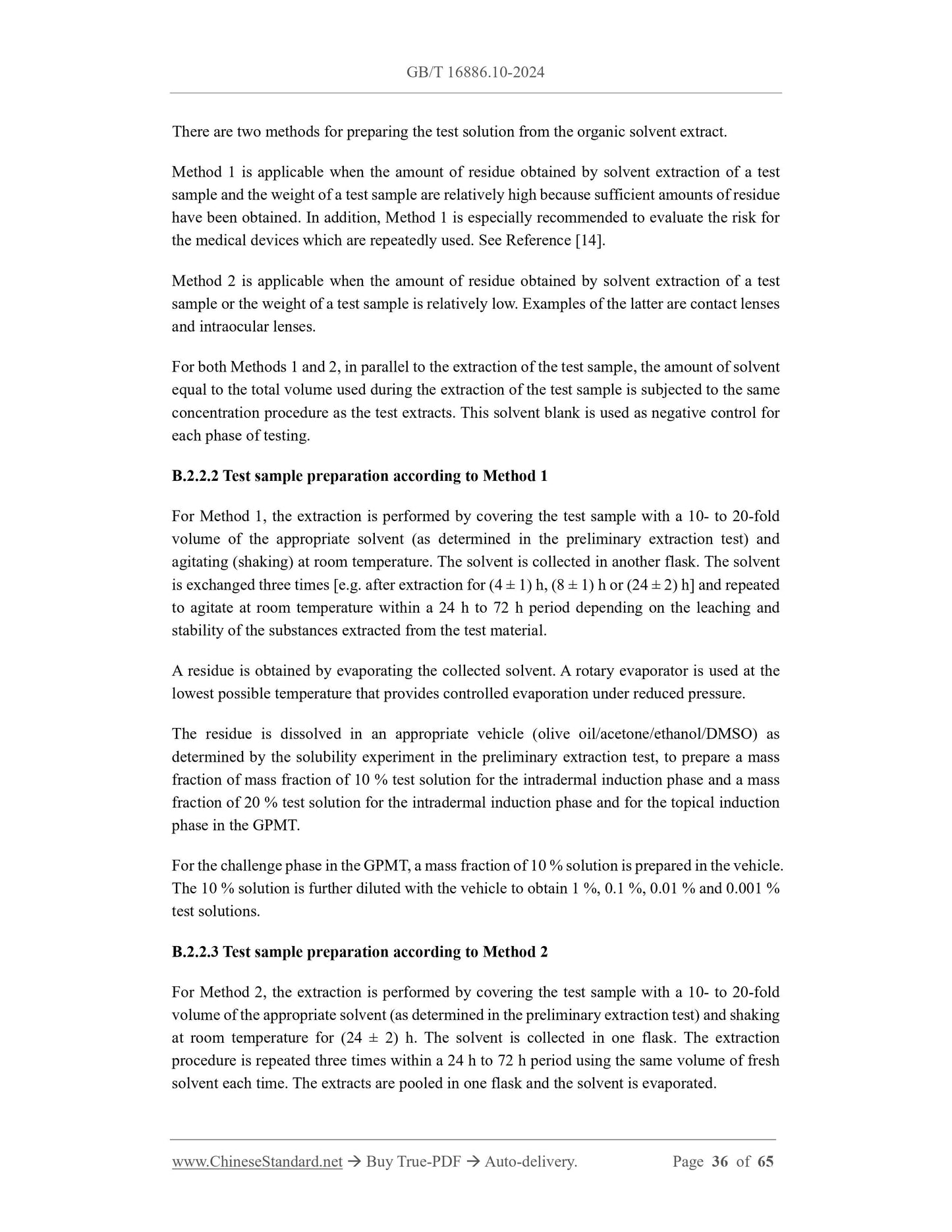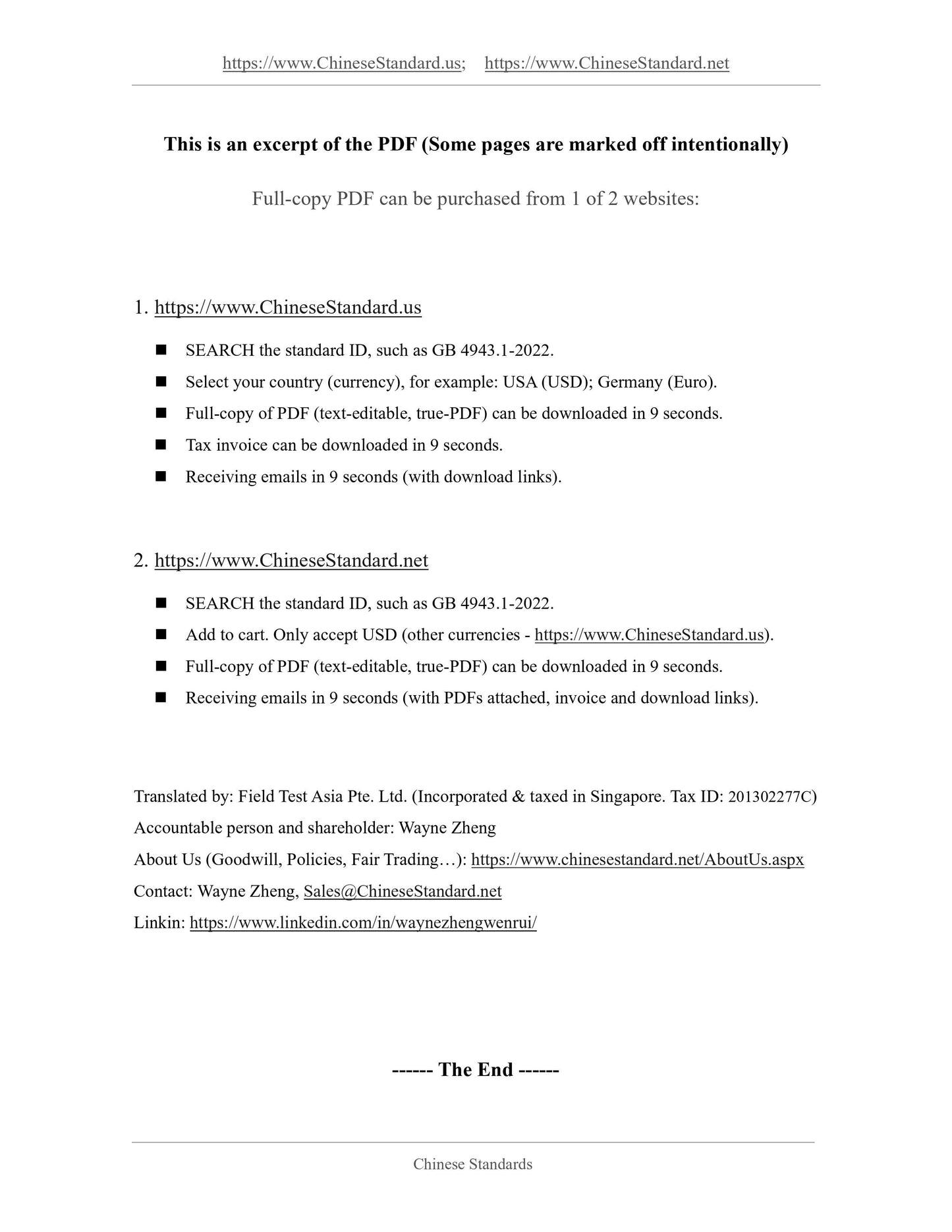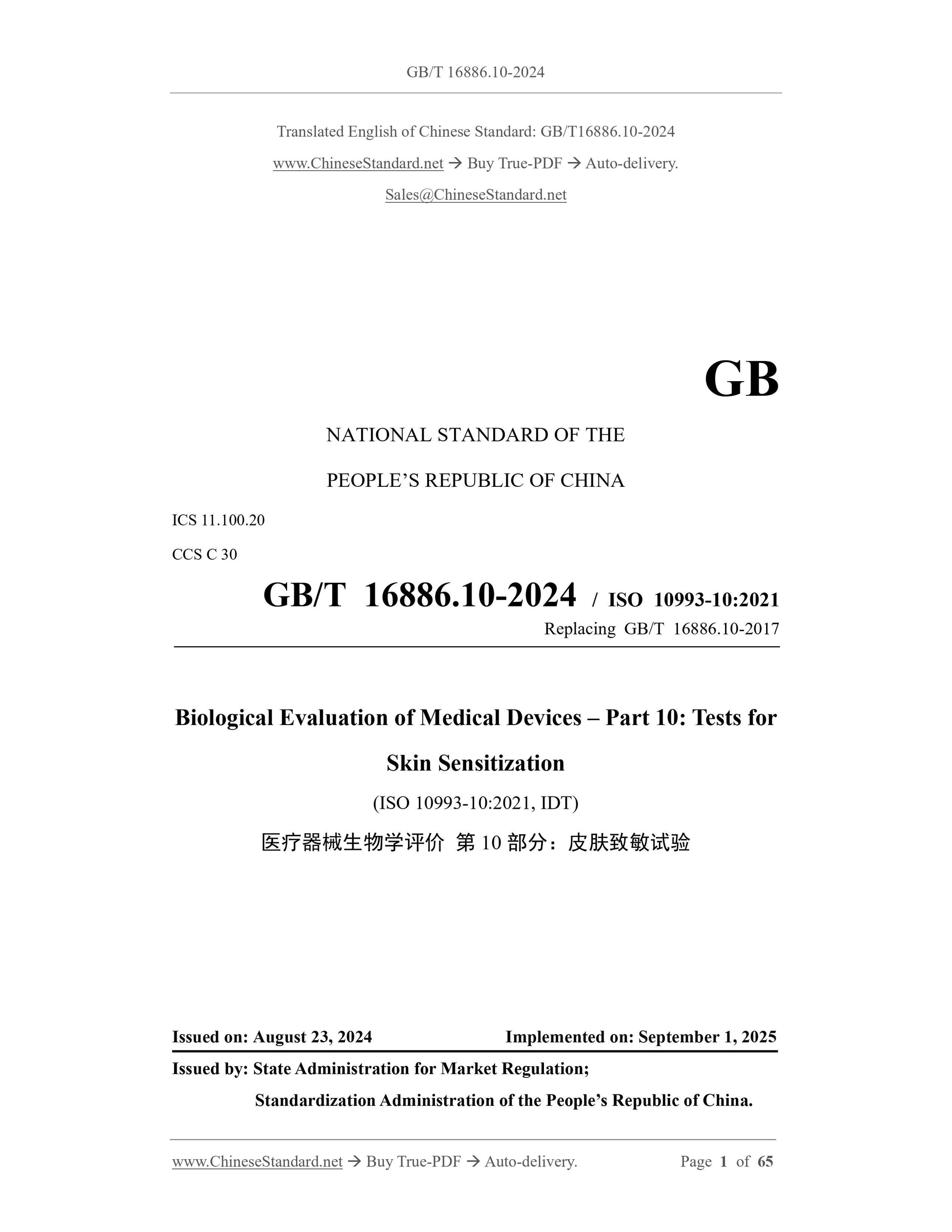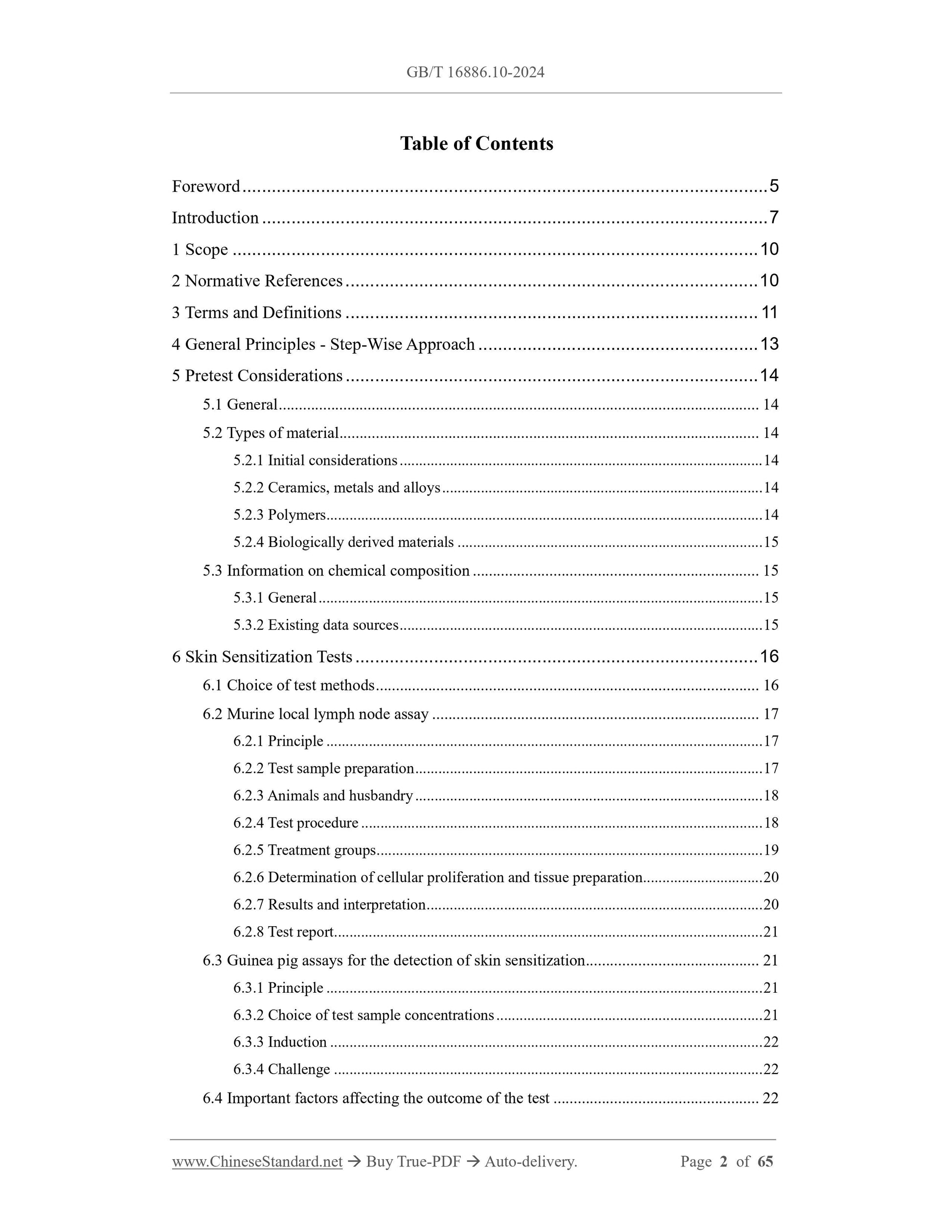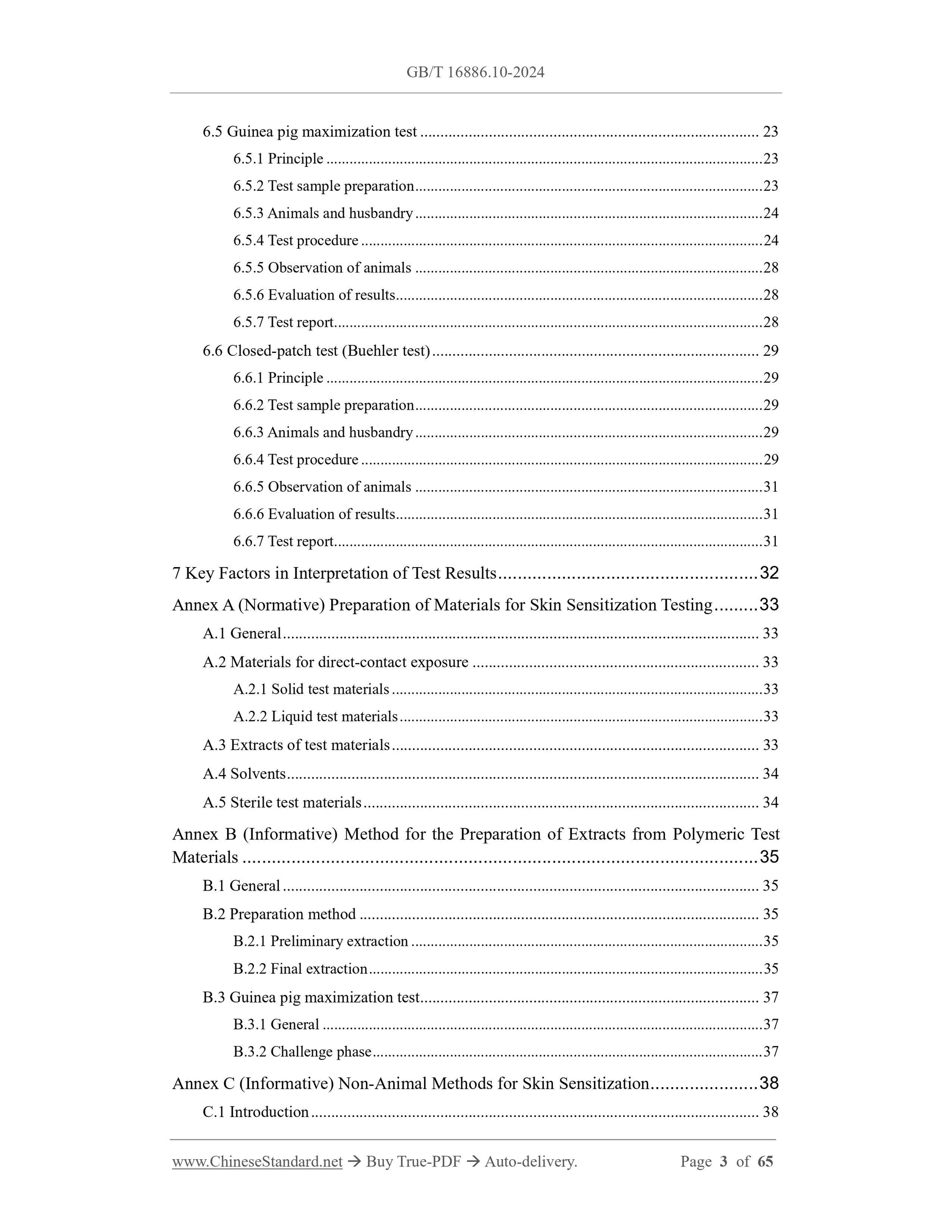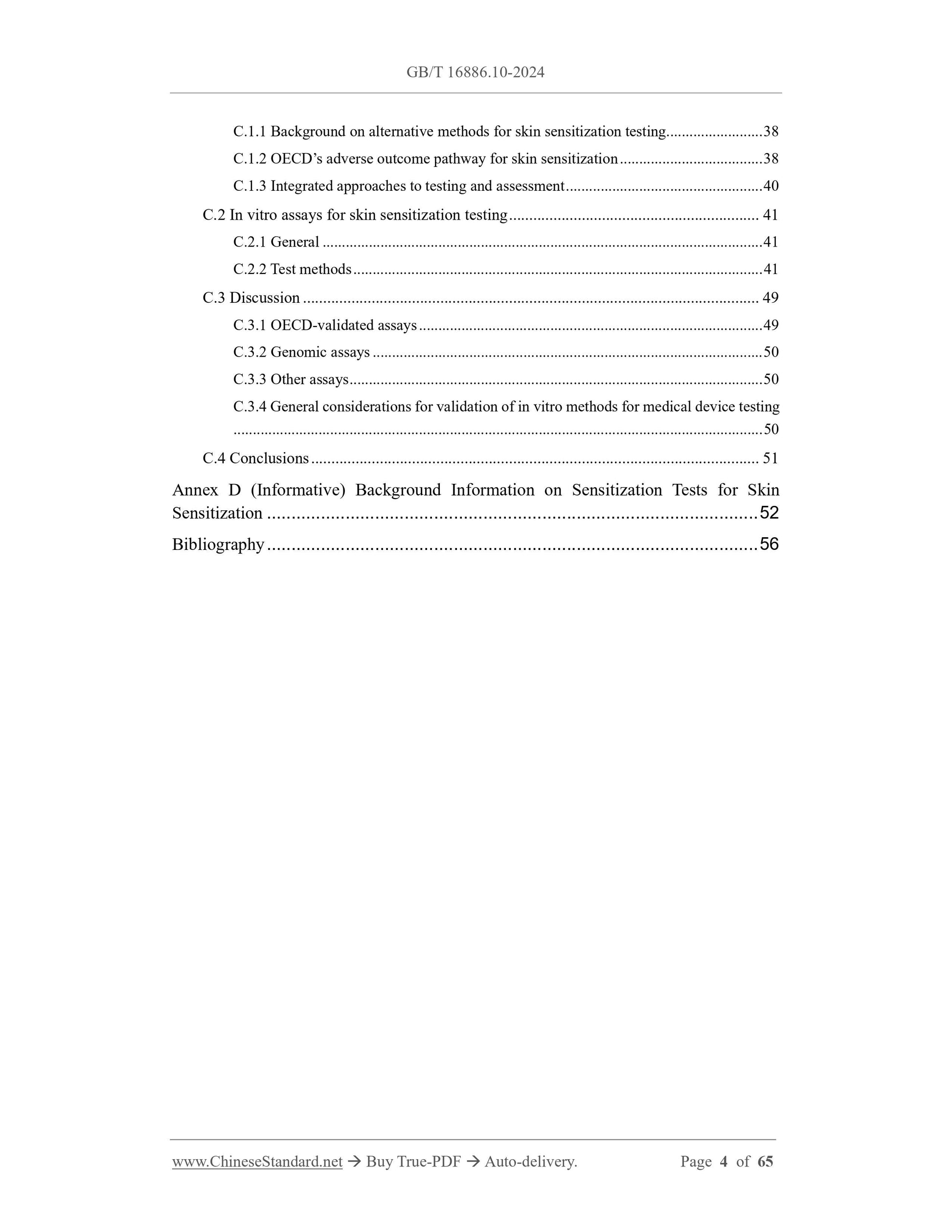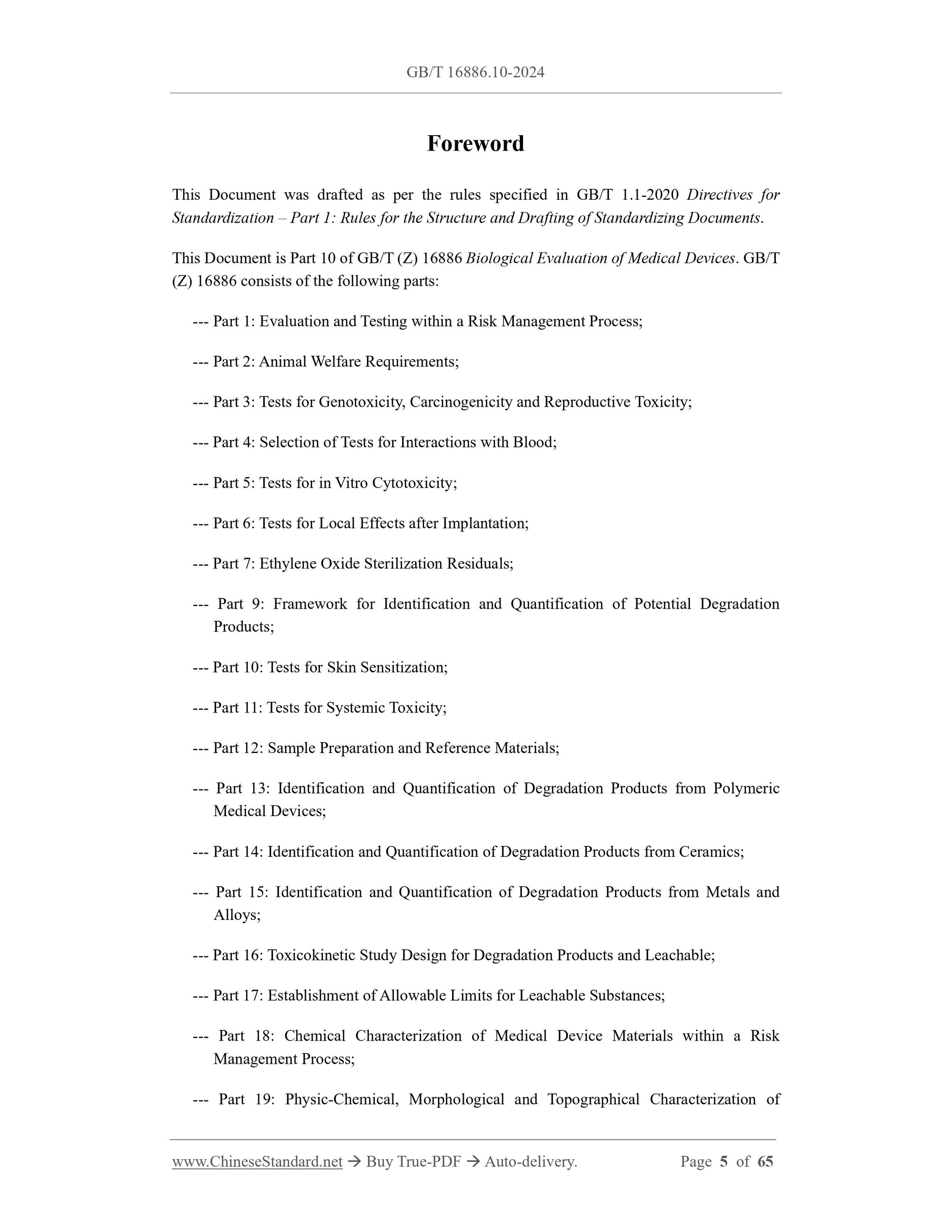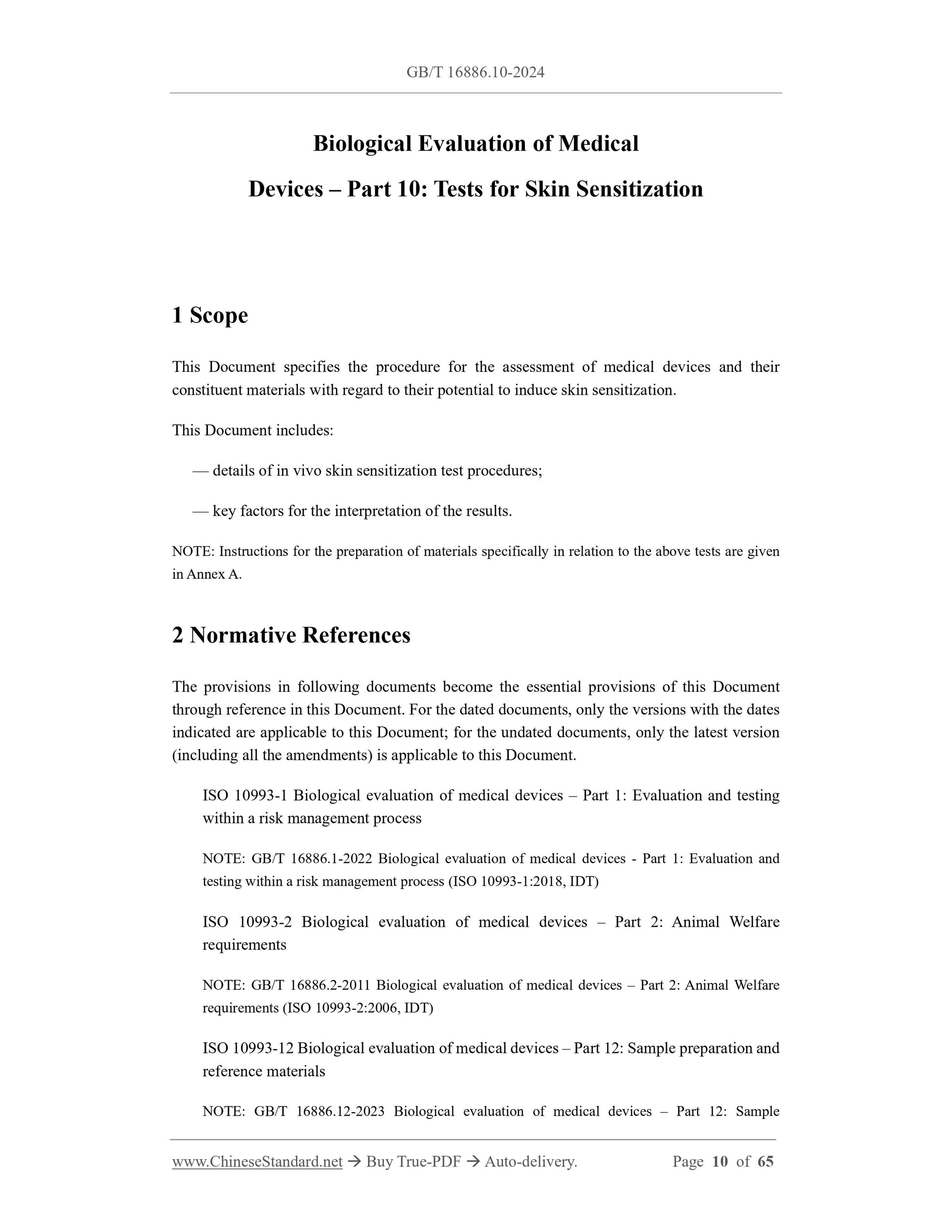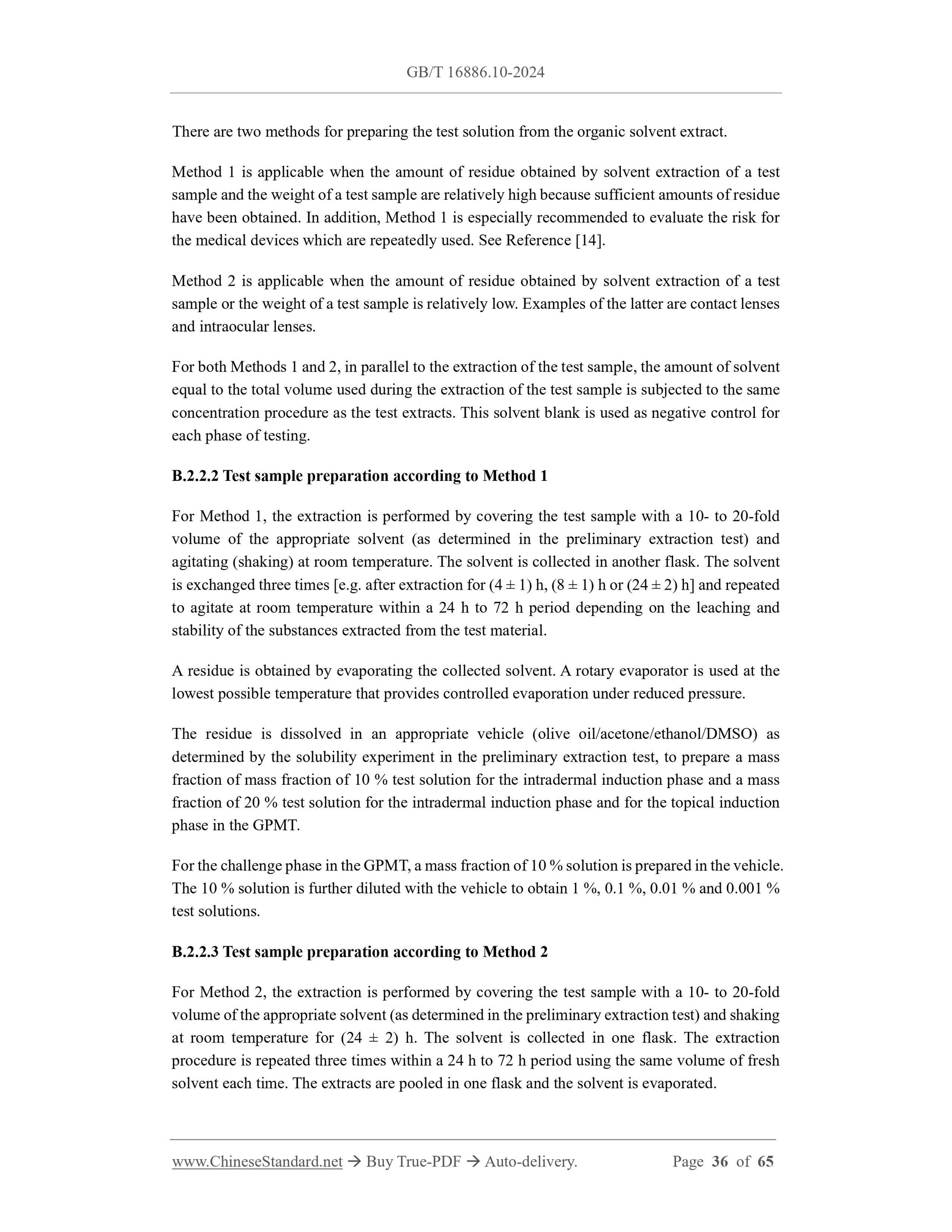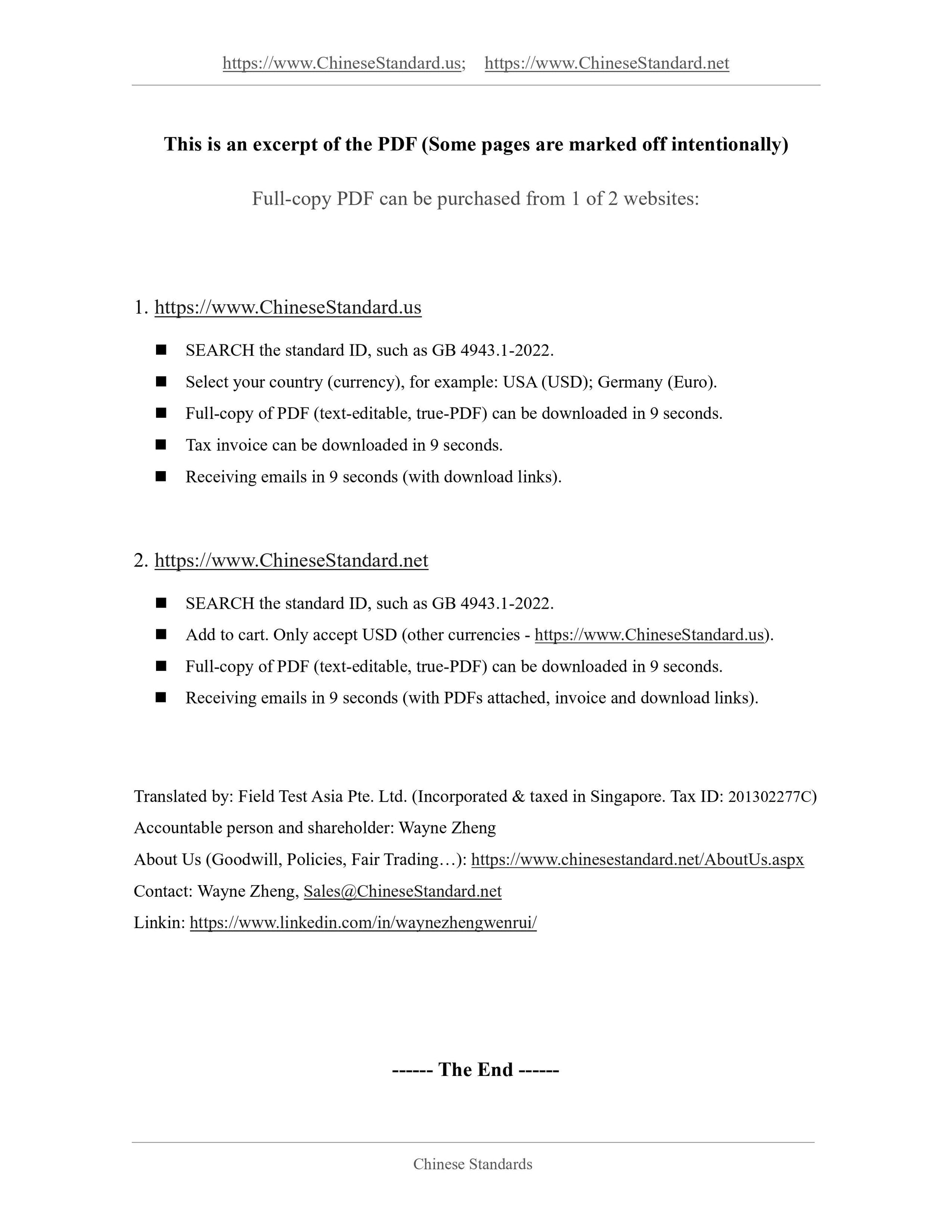1
/
of
8
www.ChineseStandard.us -- Field Test Asia Pte. Ltd.
GB/T 16886.10-2024 English PDF (GB/T16886.10-2024)
GB/T 16886.10-2024 English PDF (GB/T16886.10-2024)
Regular price
$740.00
Regular price
Sale price
$740.00
Unit price
/
per
Shipping calculated at checkout.
Couldn't load pickup availability
GB/T 16886.10-2024: Biological evaluation of medical devices - Part 10: Tests for skin sensitization
Delivery: 9 seconds. Download (and Email) true-PDF + Invoice.Get Quotation: Click GB/T 16886.10-2024 (Self-service in 1-minute)
Newer / historical versions: GB/T 16886.10-2024
Preview True-PDF
Scope
This Document specifies the procedure for the assessment of medical devices and theirconstituent materials with regard to their potential to induce skin sensitization.
Basic Data
| Standard ID | GB/T 16886.10-2024 (GB/T16886.10-2024) |
| Description (Translated English) | Biological evaluation of medical devices - Part 10: Tests for skin sensitization |
| Sector / Industry | National Standard (Recommended) |
| Classification of Chinese Standard | C30 |
| Classification of International Standard | 11.100.20 |
| Word Count Estimation | 50,563 |
| Date of Issue | 2024-08-23 |
| Date of Implementation | 2025-09-01 |
| Issuing agency(ies) | State Administration for Market Regulation, China National Standardization Administration |
Share
